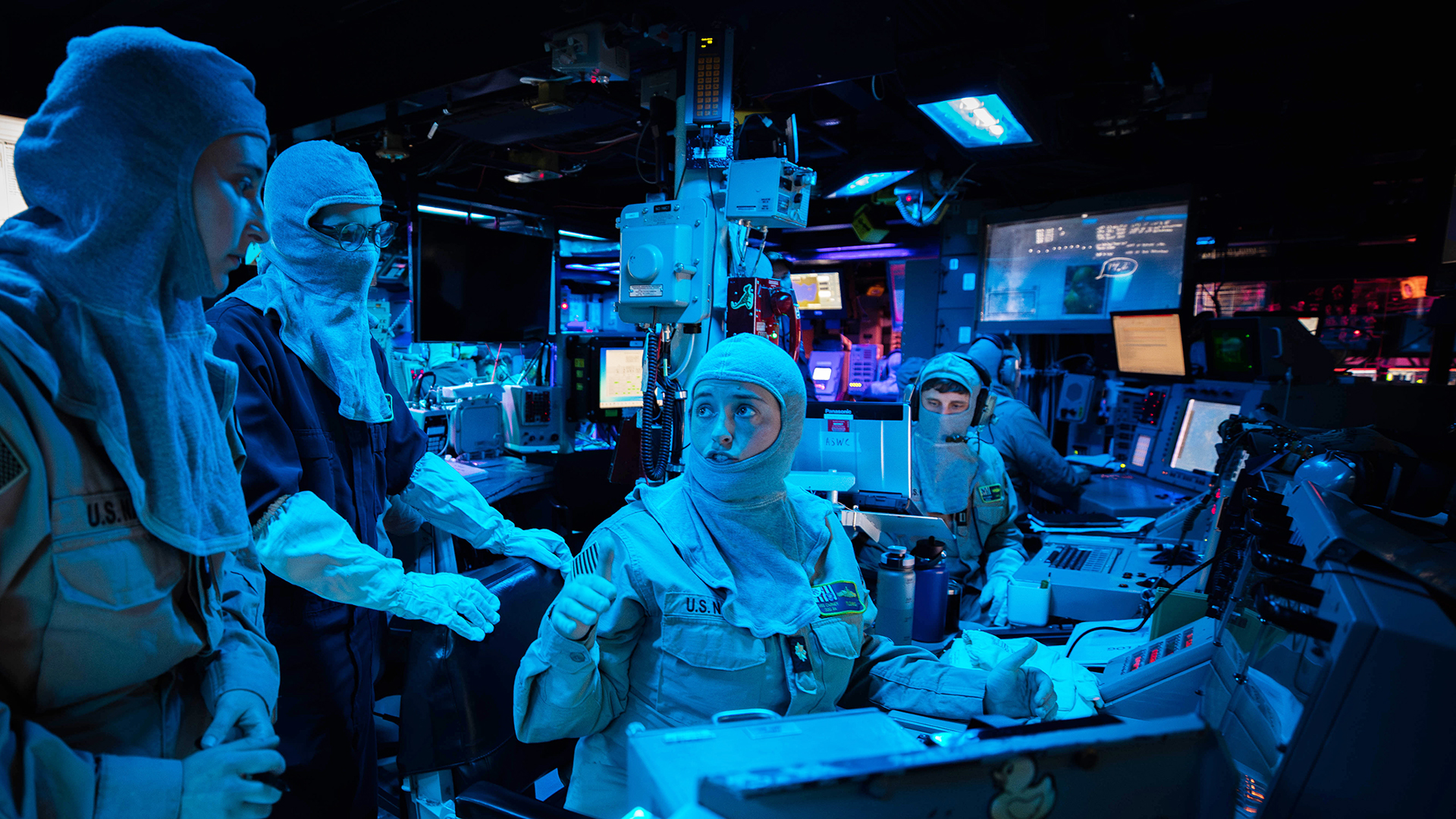The Combat Information Center (CIC) is the nerve center and tactical brain of a U.S. Navy surface combatant. These high-tech floating command centers and their watchstanders have been put to the test over the last year, unlike any other time in history, as missile and drone barrages from Houthi rebels in Yemen have plagued the Red Sea and Gulf of Aden. With this in mind, TWZ spoke with multiple surface warfare officers (SWOs) about the realities sailors face when fighting their ship from within the CIC, including what factors come into play, what mistakes can arise during tense, time sensitive engagements, and the effects of being on patrol in a free-fire zone for months on end.
Cocooned within the ship, amongst the dimly lit CIC packed with glowing screens, are between 10 and 20 sailors on watch at any given time. Led by a tactical action officer (TAO), they track all threats and movements in the region around the ship. A CIC’s air warfare watchstanders might flag an inbound Houthi missile and approve firing orders to other ship combat systems, while others are scanning the rest of the sky, correlating electronic warfare signals, tracking other surface vessels and watching out for submarines. CICs also keep in constant communication with other Navy vessels and aircraft in the area via various datalink systems, sharing sensor data and coordinating actions. The CIC works closely with the bridge to best move the ship to its most survivable or advantageous position at any given time as well.

“The things that make the environment really busy are just trying to manage threats, trying to manage traffic, trying to manage the general environment,” Bradley Martin, a retired surface warfare officer who spent two-thirds of his career at sea, told TWZ. “It’s designed to handle a lot of information and handle processing and display and dissemination. But like anywhere, when a lot of things are going on, it takes a lot of concentration to keep things straight.”
Despite the slew of information being passed back and forth in the CIC, particularly in a cruiser serving as the air defense commander for a carrier strike group, the CIC — referred to as “combat” in the surface fleet — would appear calm to an outsider who walked into the space, according to a retired Navy cruiser captain who spoke with TWZ on condition of anonymity to share his assessment. But the seeming tranquility of sailors on computers or talking into headsets belies the stakes of the CIC’s work.
“You have external comms coming from the aircraft carrier, from the planes,” he said. “You have someone in combat typically talking to the planes themselves, checking in and checking out. You’ve got internal communications, everybody’s got a headset on, they’ve typically got one circuit in one ear and another circuit in the other.”
But these days, CIC watchstanders have been tested in unprecedented ways every day in the Red Sea over the past year, these SWOs tell TWZ.
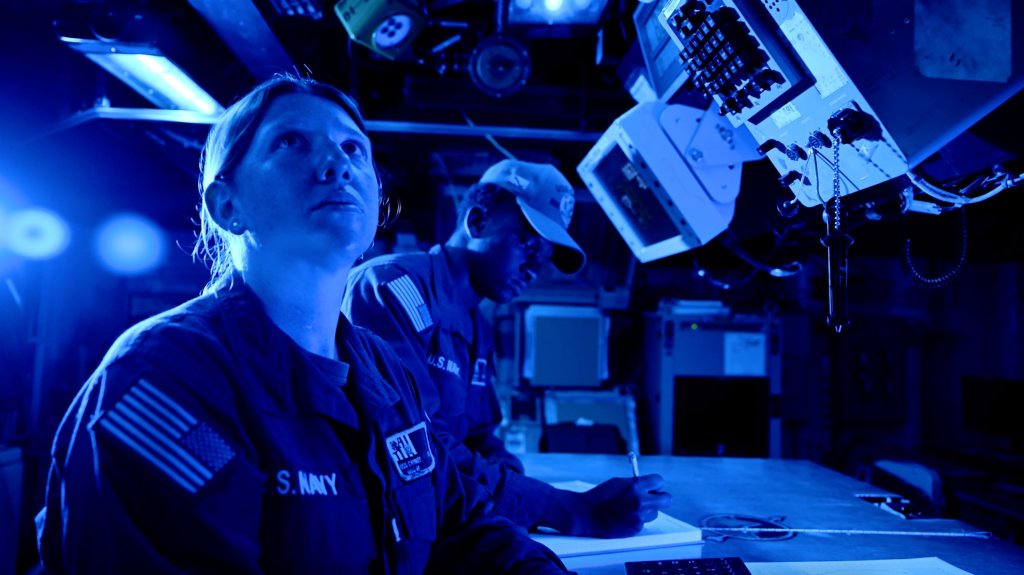
“As the amount of aircraft and the threat of actually taking a hit increases, then the pucker factor and the intensity increases as well,” the retired captain said.
The Red Sea fight has required endless vigilance and honed attention from CICs the entire time their ship is operating in those waters, according to an active-duty SWO who requested anonymity to share his personal thoughts.
“You run that kind of high-stress scenario from the moment you enter the theater until you leave if you’re operating in the Red Sea,” the active-duty SWO told TWZ. “Every other test since Operation Iraqi Freedom has been a test of our ability to support strikes into other places. This is the first time we’ve had a sustained conventional threat against open water shipping.”
Since October 2023, Navy destroyers have been shooting down aerial drones and missiles, as well as sinking drone boats, launched by Iran-backed Houthi rebels in Yemen, sometimes at a near-daily clip. You can read about the Houthi’s arsenal being brought to bear against shipping around the Bab el-Mandeb Strait here. But even as CICs track, identify and at times engage with a variety of objects popping up on their sensors, system breakdowns and inexperienced sailors hinder effective CIC operations even in peaceful waters, raising the stakes of the current Red Sea mission — and the consequences of mistakes.
As an investigation into how the Navy cruiser USS Gettysburg (CG-64) came to shoot down a F/A-18 Super Hornet jet over the Red Sea last month continues, the cruiser’s CIC was likely tracking a bevy of airborne objects simultaneously. TWZ previously reported that the shootdown occurred during a sustained Houthi drone and missile attack targeting the USS Harry S. Truman (CVN-75) carrier strike group. Cruisers serve as the air defense headquarters within such strike groups.
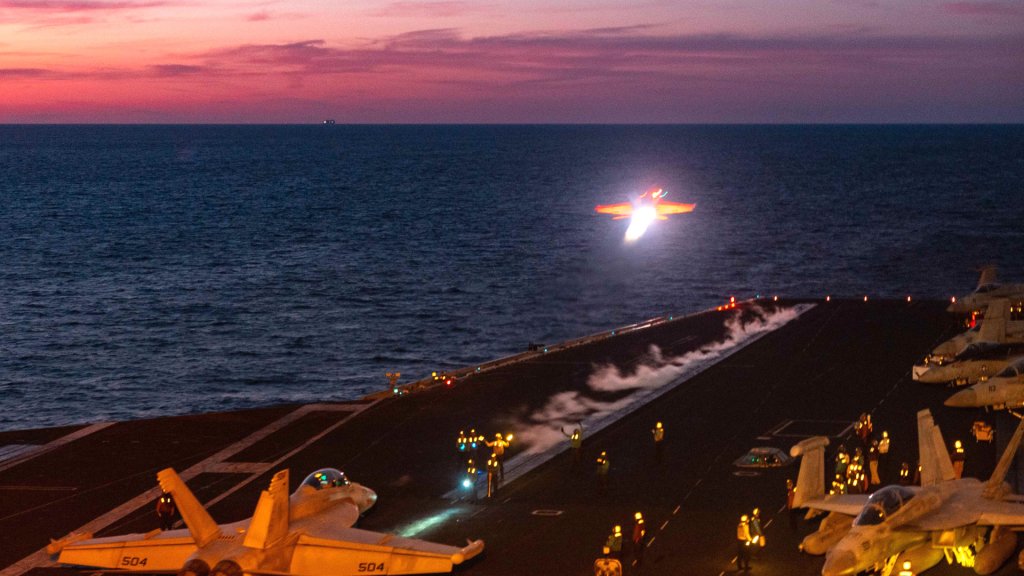
With regard to the Gettysburg friendly-fire incident, Martin said they were dealing with a situation where there were a lot of aircraft in the sky, along with surface threats, all of which created “a complicated air defense environment.”
“Whether or not somebody might have made a serious mistake with the Gettysburg, we don’t know what set of systems or decisions [were made], or what might have happened,” Martin said. “They’re busy and dealing with some ambiguous situations, situations unlike what the Navy has dealt with in a long time.”
The SWOs who spoke with TWZ said that Navy CICs in the Red Sea deserve credit for executing so well.
“These ships over the last year have done a fairly remarkable number of engagements, far more than the Navy had done in the previous 50 years,” Martin said. “And they are by and large handling those correctly.”
Still, the active-duty SWO said the Houthi aerial drone threat adds a major layer of complexity for the CICs to manage.
“When a missile gets fired, I know what that is, it’s coming out of Yemen, moving at this speed, blast it out of the sky,” he said. “All these drones just act like airplanes, and the problem is airplanes can be good or bad, and it’s hard to tell the difference.”
“I don’t envy their position,” the active-duty SWO said of CIC teams in the Red Sea. “It sounds miserable. It’s not black and white, and you have a bunch of gray zone contacts.”
“It’s pretty damn complicated, and it requires a very high level of cognitive attention to detail, and alertness,” the retired cruiser captain noted.
Adding to the Red Sea stress is the fact that the systems upon which a CIC relies regularly go down, according to an active-duty, former destroyer commander who requested anonymity to speak frankly. That’s compounded by the fact that, while a CIC watch team may spend months training up together, some of those sailors will never deploy due to them having to head to a new assignment.
“It’s a miracle if you can train the same team that goes from basic phase to advanced phase to deployment,” the former destroyer skipper said.
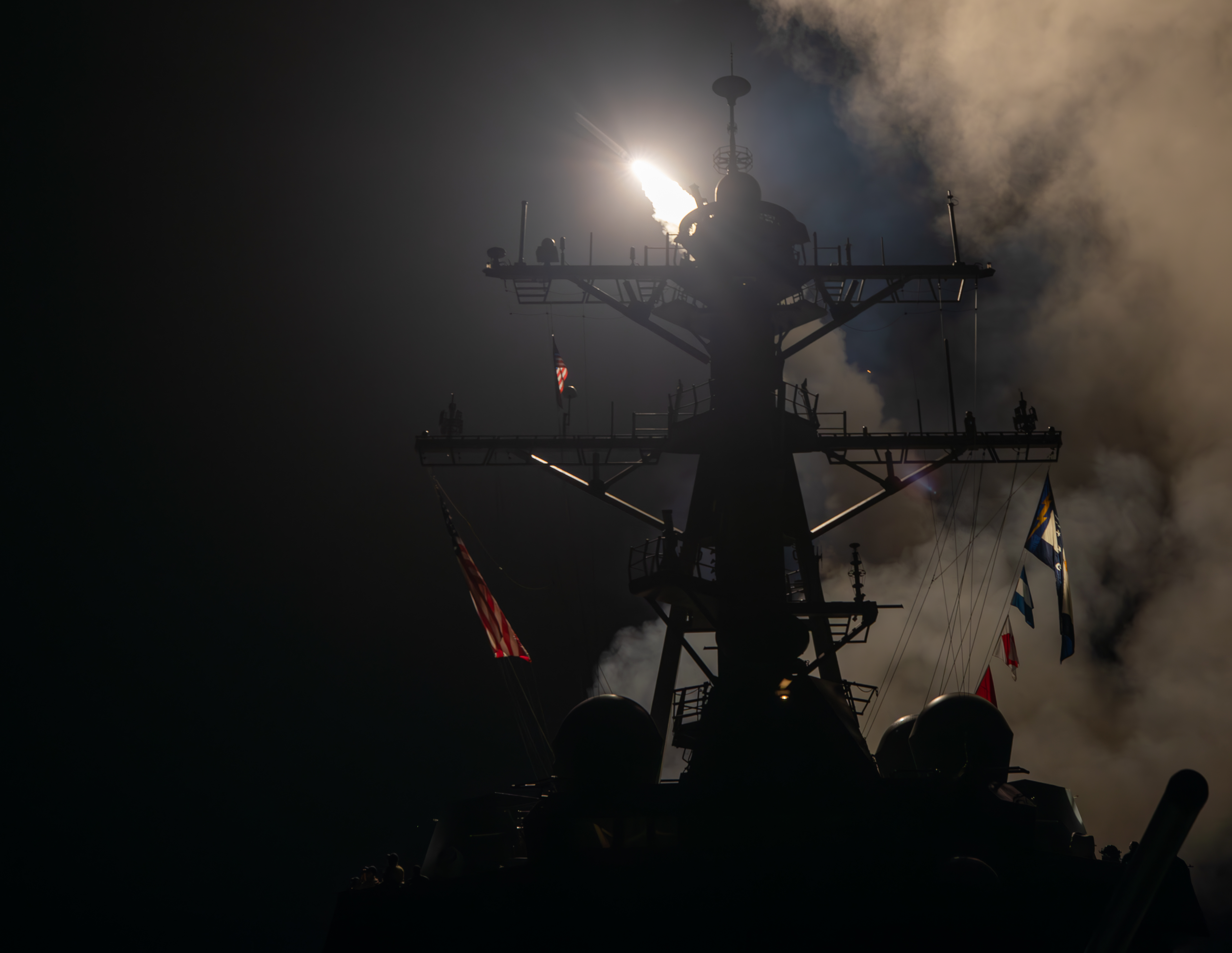
Watching from afar, the former destroyer CO fears that a mix of inexperienced CIC sailors and the kind of regular system outages that plague Navy warships could at any time cause things “to kind of break down pretty quick” in the Red Sea, despite the winning track record so far. While the Houthis might not be the most advanced threat, “it does not take much” for a warship’s radar or other systems to crash, he said, leaving the vessel without critical information and vulnerable.
The nature of the Houthi fight makes it harder to decipher objects on the radar as well, the officer said. In such instances, the TAO will often do a “hook and look,” locking onto an airborne object that pops up on radar and then working to identify it.
“If I had hooked an unknown track that was at 10,000 feet going 340 knots in the direction of the carrier, my first thought is that’s an F-18,” and other ship systems would soon confirm that, the former destroyer CO said.
But in the Red Sea, an enemy aerial drone may get tracked at the same bearing and range, but perhaps at a lower altitude than the friendly jet, which can sometimes cause watchstanders or radar systems to “swap tracks,” he said.
“So we have people trained to then hook and look and verify and interrogate again,” the former destroyer CO said. “When you’re doing all of that with a couple of aircraft, that’s hard. If you’re doing it with, like, 15 aircraft, it’s really hard. If you’re doing that with 15 aircraft, missiles and [air drones], it’s very, very hard.”
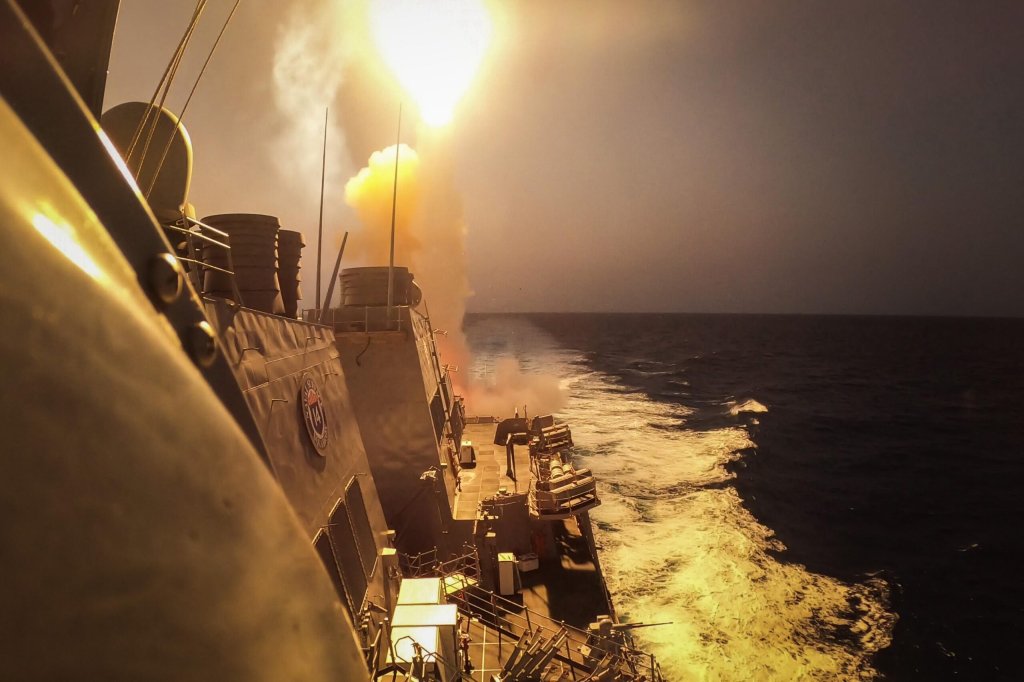
CICs also regularly struggle with “leaders,” or long lines on a radar that look like something speeding at 780 knots toward the ship, only for it to suddenly disappear. And while a warship’s Aegis Combat System is designed to help clear some of that clutter, the former destroyer CO said CIC watchstanders risk becoming complacent with leaders.
“Sometimes you’ll drop clutter so routinely that you could end up dropping a missile,” he said. “There’s specific parameters to set the ship to, even in the Red Sea, but you have to go through that process to make sure that your clutter mapping and your systems configuration is accurate to that exact location with the amount of sand that’s in the air, deducting for the temperature and the environment and atmosphere and everything else.”
“More tracks and confusion, and then you start throwing in some of those long leaders of clutter, because it’s the Red Sea, full of sand and shit,” the former destroyer CO added. “You’re like, well, I hope that’s clutter.”
Meanwhile, CIC sailors are working to coordinate object assessments with other strike group CICs and the air defense commander, a task made harder by the Red Sea’s busy skies.
“So, track number 1234, is F/A-18 friendly, or track number 1234 is hostile, [aerial drone], cruise missile, whatever that is,” the former destroyer CO explained. “But if they’re doing that for every one of the inbound threats, then you have a lot of track coordination that’s going on in the background in a very short amount of time. That has to be correct, because they can force order something in the [Link 16 communications] system that will make it that thing, regardless of somebody disagreeing with it or not.”
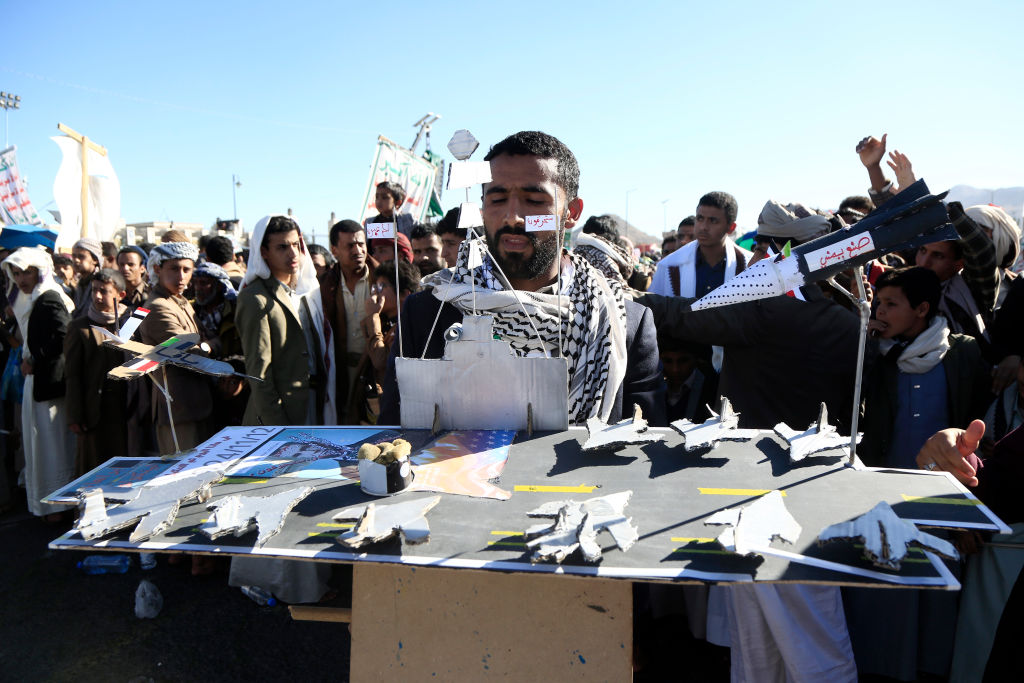
The former destroyer CO said he feels it’s “lucky” that no Navy ships have been hit so far in the Red Sea, but he suspects “the American public are going to lose their minds if a destroyer gets hit.”
“At some point, sailors are going to get killed, and I feel like it doesn’t take much,” he said. “You’ve got a bad interface control, system casualty, fog of war, clutter, or your missile malfunctions, your [Phalanx Close-In Weapons System] wasn’t aligned properly, or something like that.”

Despite the efforts of the Navy warships and their CICs in the Red Sea, the former destroyer CO also said he thinks the Houthis’ tactics will improve, as will their weapons, if other nations opt to provide them with better munitions. While Iran has largely supplied the Houthis thus far, reports surfaced last year that Russia was seeking to arm the Houthis with more-advanced cruise missiles.
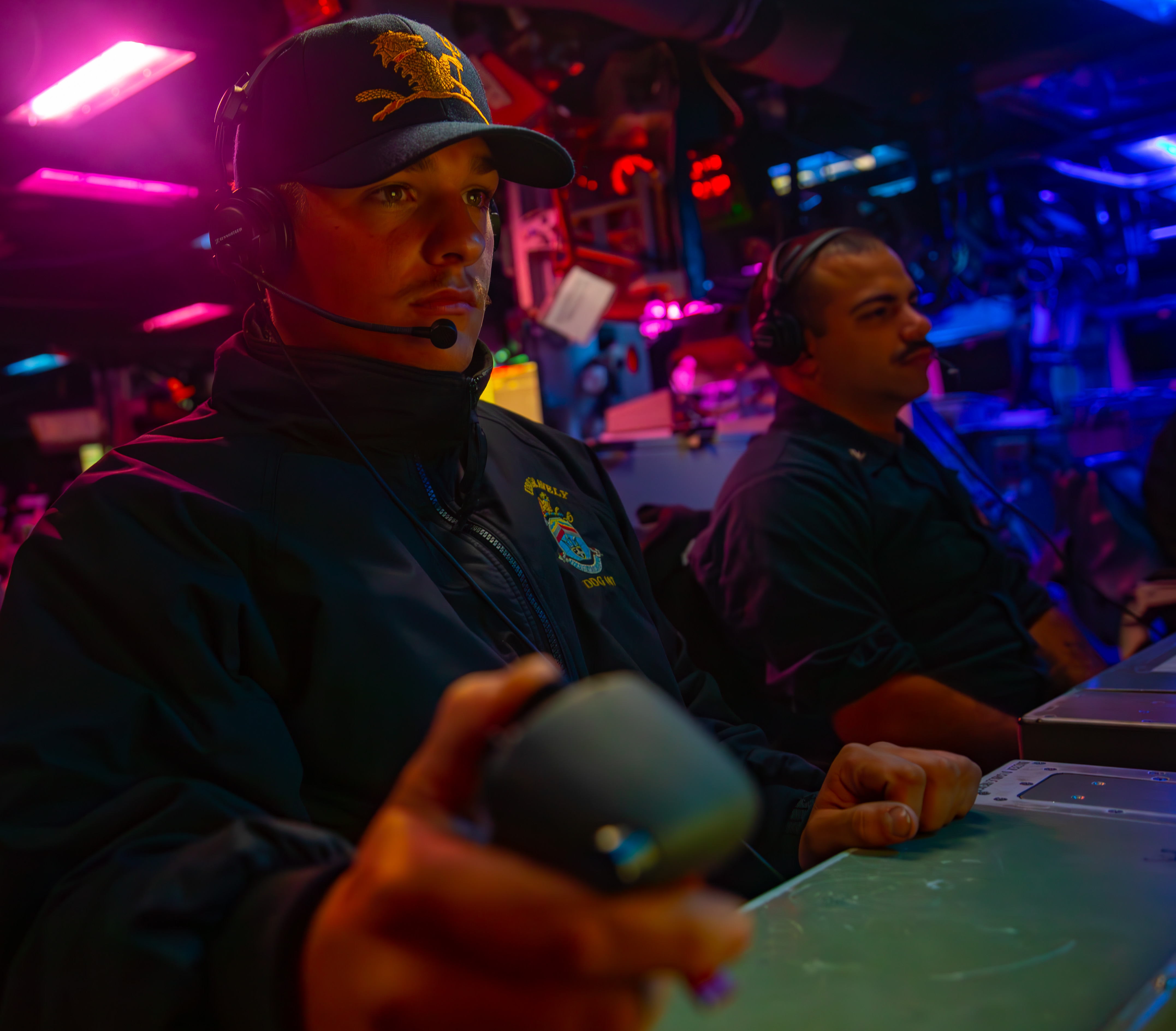
“They’re doing everything they possibly can to try and kill Americans,” he said. “At the end of the day, I think there’s a lot of luck involved in this right now, to be right and perfect 24/7.”
When and how the Red Sea battle will end remains to be seen. Until then, U.S. sailors standing watch in the CICs will continue to deal with a hostile, crowded and frenetic combat environment, with no shortage of objects to track and threats to engage.
Email the author: geoff@twz.com
